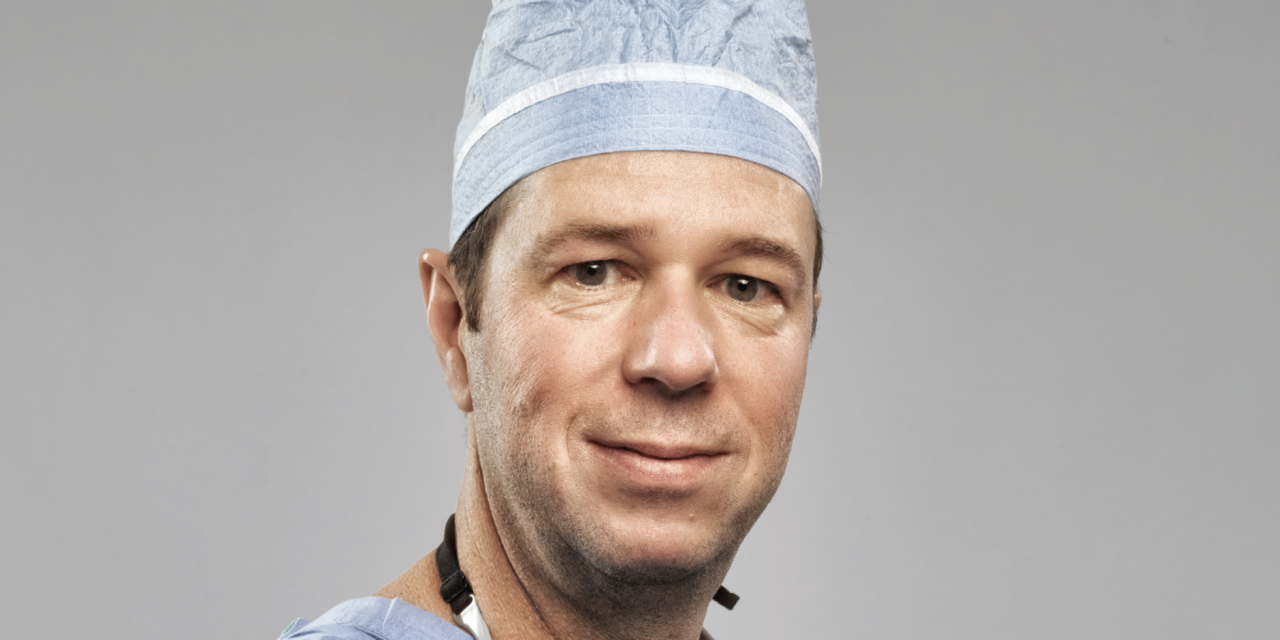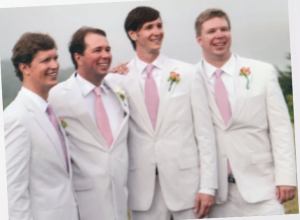
All Hands On Deck

-In the midst of a pandemic, noted Transplant Surgeon Curtis Cetrulo Embraces a new Challenge-
A number of conditions must be met for a transplant surgery to be successful.
Organs and appendages must be perfect matches, for one thing. Surgeons must painstakingly connect vessels and tissue. And patients must be vigilant with their follow-up medication regimen, or the body may recognize the transplant as a threat and react by fighting it as it would an infection.
For Curtis Cetrulo ’88, a plastic and reconstructive surgeon at Massachusetts General Hospital who performed the country’s first penile transplant in 2016, groundbreaking transplant surgery requires not only precise science, but the right patient. The oldest of four brothers who attended Milton, Cetrulo spoke with Milton Magazine in the spring about his career as a pioneer in transplant surgery and pivoting his MGH lab to collaborate
on the response to Covid-19.
A successful solution to a previously insurmountable problem follows years of study, review, and approval, and it relies on a whole team, including the person being healed.
“It wouldn’t be wise to choose someone for this kind of procedure if they were not armed with the emotional well-being tools, the coping mechanisms, and the commitment to go forward,” Cetrulo said. “It’s not just the initial period. It’s afterward, making this new body part your own and, in this case, being selfless enough to want to talk about it publicly and provide an example for others. We, fortunately, hit the jackpot with our patient in that he’s incredibly selfless in sharing his experience.”
The patient, who had lost his penis to cancer, is one of only four people in the world who have received successful penile transplants. His candor about the experience is vital because of the surgery’s implications—not just for similar cancer patients but for wounded warriors, whose genitourinary injuries inspired Cetrulo’s team in the first place.
It started with a different patient, a different pioneering surgery.
Cetrulo had performed MGH’s first hand transplant. The complicated surgery was done for one of the survivors of the 2003 Station nightclub fire in Rhode Island. Cetrulo used a technique called microsurgery, named because the vessels are so tiny that they require a microscope for the surgeon to see the connections.
He was presenting the hand-transplant case when he was approached by a transplant fellow named Glen Barrisford, a urologist who had just returned from visiting the Walter Reed National Military Medical Center in Washington, D.C. Reconstructive microsurgery had great implications for facial and hand transplants, Barrisford said; could it work for genitourinary injuries—an unspoken but devastating trauma for some wounded veterans?
“Wounded warriors are now surviving because they have amazing body armor that protects the abdomen and the thorax,” Cetrulo explained. “In previous conflicts, those who were shot or in blasts would die because of injuries to their lungs, heart, and abdomen. Because of the new armor, they’re surviving, but they’re getting injuries to the face, arms and hands, legs, and genitourinary area. But no one was talking about genitourinary trauma.”
The loss of urinary and sexual function is a sensitive topic for a patient at any age; for the wounded veterans, many of whom are young men, it represents an unbearable loss—of intimacy, independence, and a chance to start a family, Cetrulo said. The urologist described despondency among the veterans with genitourinary injuries.
About a dozen surgeons worked with Cetrulo to research the possibilities and carry out the surgery. The Department of Defense has strict requirements before innovative surgeries are permitted on a veteran.
“The way they think about it—and we share this view—is that those guys have sacrificed enough,” Cetrulo said. “The military funds studies for these things, but it’s incumbent on us to work out the protocols and to demonstrate to the Department of Defense that what we’re doing is safe and the benefits will outweigh the risks. We would not treat any civilian patient any differently. It’s just a principle.”
Reconstructive microsurgery for penile transplantation could benefit cancer patients as well as wounded veterans, and the doctors set out to find a good candidate—ultimately connecting with the man who received the 2016 transplant.
“He is just a wonderful patient,” Cetrulo said. “He realized that it was bigger than himself, that it could help others. And he’s doing great. The drugs he needs to take are tough: They cause issues, and we’ve dealt with infections. It hasn’t been all smooth sailing. It took almost three years for his function to return.”
Sharing the success of that surgery has been critical to Cetrulo, who has been in contact with the physicians in South Africa who performed the world’s first (and, recently, its fourth) successful penile transplant. He has also connected with the team from Johns Hopkins that in 2018 performed the first-ever total penis and scrotum transplant for a veteran who suffered injuries from an improvised explosive device in Afghanistan.
Reconstructive microsurgery is Cetrulo’s favorite part of his practice, in which many patients are children who have suffered traumas. The technical challenges of procedures to restore a face after burns or salvage limbs that might otherwise need to be amputated are worth confronting when the procedure can change a life.

The Cetrulo brothers, pictured here at Curtis’s wedding, are all Milton graduates (from left): Erik ’89, Curtis ’88, Craig ’96, and Kyle ’93.
Cetrulo always had his sights set on medicine, wanting to follow in the footsteps of his father, a high-risk obstetrician. After seeing a toe-to-thumb transplant as a medical student, Cetrulo decided to become a surgeon.
“Microsurgery is what got me hooked,” he said. “You can see all the amazing things you can do with that tool, from replanting a finger or an arm, to creating a functional muscle so someone can smile.”
Cetrulo also performs post-mastectomy breast reconstructions for cancer survivors, peripheral nerve surgery, cosmetic surgery, and other forms.
When Covid-19 first appeared in Boston, Cetrulo and other MGH surgeons were temporarily reassigned: As surgeons, they are trained in the intensive-care procedures necessary for coronavirus treatment, such as placing central and arterial lines and running ventilators. Learning from New York City doctors who were in the throes of responding to the crisis, surgeons and some anesthesiologists formed a “surgical s.w.a.t. team” of doctors who could efficiently perform those procedures and free up the time of other icu physicians.
The coronavirus forced seismic changes in medicine, seemingly overnight. Globally, doctors had to face dire decisions about which patients would receive which limited resources. Non-emergency procedures ground to a halt: Cetrulo had to postpone several surgeries and held pre- and post-operative appointments via video conferencing. Meeting with patients remotely has demonstrated the efficiency of telehealth technology, he said.
In the midst of everything, Cetrulo and his wife, Kate, were helping with their son, Dylan, a third grader whose school had gone remote for the rest of the year. Collaboration and technology were key to that effort, too. Curtis’s brother Craig ’96, an educator, helped the family manage the sudden shift to remote learning.
“This is an all-hands-on-deck moment,” Cetrulo said. “A lot is going to change when this is all said and done, and some of it is just amazing.”
That spirit of collaboration was on display in Cetrulo’s lab as well. He is the director of the vascular composite allotransplantation (transplantation of cells) lab at MGH.
“I love the research,” he said. “I love innovating and solving problems where there are unmet needs. These problems that just drive us crazy—that’s what drives the lab: wanting to find a better solution.”
In response to the pandemic, Cetrulo redeployed his lab resources to studying antiviral therapies. The traditional anti-rejection drugs needed by transplant patients are immunosuppressants—powerful medications that can have devastating side effects such as kidney failure and cancer. They’re necessary when a patient needs a life-saving transplant such as a heart or a liver. But for life-enhancing procedures such as facial and hand transplants, each case means balancing whether taking immunosuppressants is worth it for the patient.
In Cetrulo’s lab, researchers have been exploring whether various therapies using donor stem cells in transplant recipients can help patients build up their immunologic defense. When the coronavirus arrived, they switched gears to study whether stem cell therapies can be used to combat the airway inflammation that makes Covid-19 so brutal. Cetrulo’s brother Kyle ’93 owns the stem-cell laboratory Auxocell, which donated discarded fetal and placental cells to MGH.
Although the pandemic was like nothing modern medicine had seen before, Cetrulo detected an early silver lining: unprecedented cooperation and sharing among doctors, researchers, and the biomedical industry—people accustomed to competing against one another to publish or win funding. Another Cetrulo brother, Erik ’89, sent Curtis a news story about a small biotech company in Seattle that had seen early success with a new coronavirus therapy; a few hours and a couple of emails later, the company agreed to partner with Cetrulo on a clinical trial.
“The beauty of a place like MGH is that there are a lot of really smart people working on really smart approaches to this crisis,” he said. “But even if we don’t have enough patients to do all these clinical trials here, plenty of patients all over the world can benefit. And I don’t care who gets the credit; we’ll just send the information to the next place that needs it and collaborate.”
By Marisa Donelan
Photographs by David Yellen




